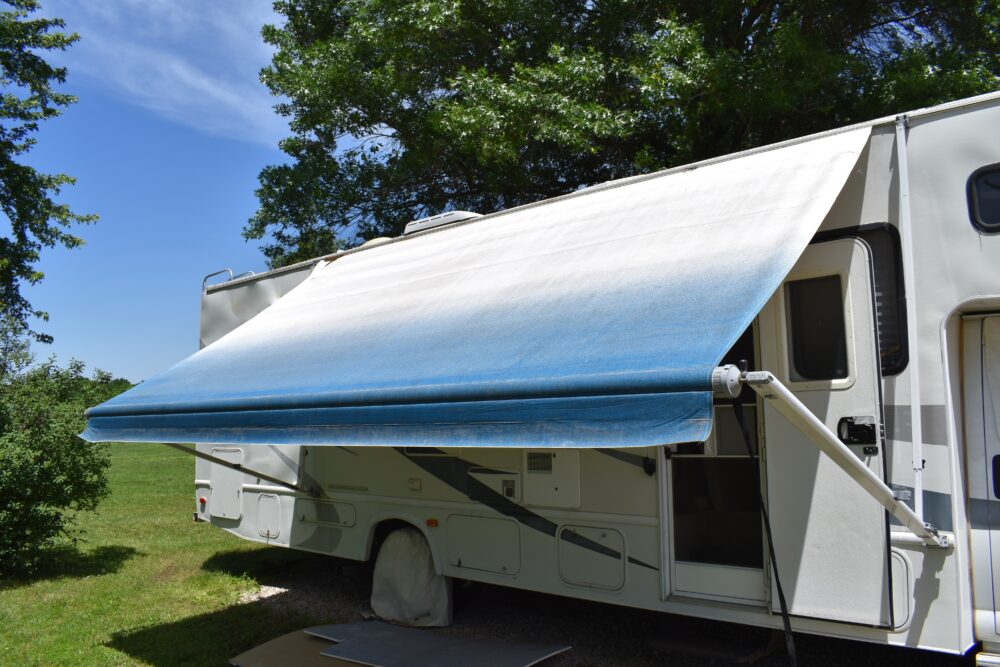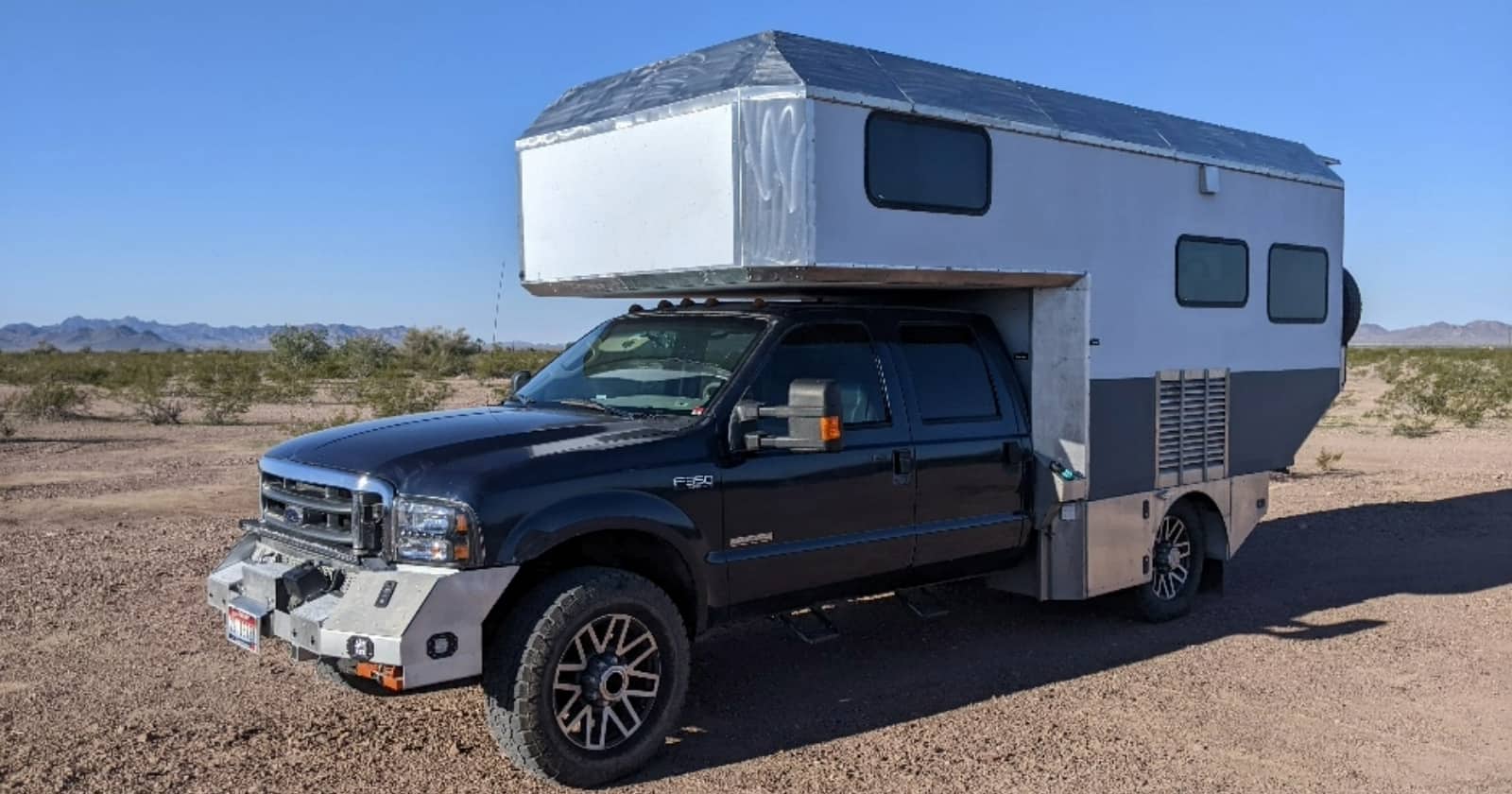
Can You Use Armor All On RV Awnings?
RVs require regular cleaning and maintenance. This includes exterior features such as awnings.
Awnings are often exposed to dirt, pollen, sap, bird poop, and a variety of other substances. If you use Armor All cleaning products on other parts of your RV, you may wonder if they will work for your awnings as well.
The answer is yes and no! Some Armor All products work well for vinyl awnings because they preserve the color and remove tough stains. However, you should keep most products away from acrylic canvas awnings. Canvas can be damaged much more easily, and some Armor All products are sometimes a bit too harsh. There are some gentle alternatives you could use, though!
Before you apply any sort of cleaner to your awning, make sure you understand what type of material it’s made of. Vinyl and canvas awnings require different types of care, and you could damage the material if you use the wrong method/cleaner. Below, we’ll break down some of the uses for Armor All, as well as alternatives you could use.
Vinyl awnings
Lots of RVs come with vinyl awnings, and it’s easy to see why. For starters, they’re waterproof and quite durable! It’s not easy to rip this material, and it can withstand harsher cleaning products as a result.
Armor All® Car Wash can be used to clean vinyl awnings. Additionally, you can use this product to clean convertible tops and furniture that are made from the same material. This cleaning solution removes buildup, prevents discoloration, and slows the rate of UV damage.
Once you’re satisfied with the cleanliness, you can finish up by applying a layer of Armor All® Protectant. This product preserves the vinyl color and provides a bit of extra sun protection. It’s not essential, but it could extend the lifespan of your RV awning!
Acrylic canvas awnings
Canvas awnings are another popular option for RVers. Many people enjoy them because they maintain their color over the years, are lightweight, and dry quickly. This last point comes in handy if you travel through wet areas! Damp awnings can lead to mildew and mold. Therefore, acrylic canvas awnings are the best option if you need a material that dries quickly.
On the downside, these awnings are more susceptible to damage. The weave can fray and rip more easily. In addition, canvas needs waterproof coatings to help it repel water. Harsh cleaning products often strip away this protective layer, leaving the fabric exposed to the elements.
Therefore, most Armor All cleaners are not ideal for canvas awnings. These products are powerful, but they’re not designed for fabric. However, if you want to just do a quick wipe-down to remove some dirt, you could use gentle options such as Armor All® Multi-Purpose Auto Cleaner or Armor All® Cleaning Wipes.
These may not remove the tough stains, but they’ll provide a good surface-level cleaning for your awning. So you don’t have to completely avoid Armor All products if you have an awning made of canvas, but you’ll need to be more careful about the ones you use.
Alternative cleaning products
The Armor All family of products is huge, and you can find a good option for just about any job. However, most of their products aren’t specifically designed for awnings. They’re fairly multi-purpose, which is good in some cases and bad in others.
If you want an awning-specific cleaner, try some of the options below.
- Star Brite RV Awning Cleaner
- Camco 41024 Pro-Strength Awning Cleaner
- B.E.S.T. PROPACK Awning Cleaner
- Valterra LLC V88542 Awning Cleaner
- Bio-Kleen M01509 Awning Cleaner
How to clean an RV awning
You can use a variety of cleaners to scrub an RV awning. Whether you use an Armor All product or one of the options above, you can remove the worst stains from the material. The tools that you use also play a factor, though. Vinyl and canvas require different treatments, and you could damage them if you use the wrong methods.
Check out the brief breakdown of each cleaning procedure below.
Vinyl
To begin, unfurl the awning and lower it as much as possible. Use a broom or brush to sweep the surface. This removes any loose dirt or dust. After that, spray the awning with a hose.
Once you’ve performed this quick surface-level cleaning, apply your cleaning product of choice. Make sure you read all the instructions and dilute it if necessary. You also need to ensure that the product you use is safe for vinyl materials.
Apply the cleaner to the wet surface and let it soak for at least five minutes. In order to keep the surface wet, you can roll up the awning and store it for a few minutes. Once it has soaked in, use a sponge or a soft-bristled brush to lather up the awning. It’s important to use gentle cleaning tools so you don’t scratch or tear the vinyl.
Now you just need to rinse off the soap and let the awning dry thoroughly. Vinyl is prone to molding, so you need to be careful to remove all remaining moisture. After everything is dry, you can roll it up and stow it once again.
Acrylic canvas
You’ll follow a pretty similar process when it comes to cleaning canvas awnings. The main difference lies in the final steps.
Just like before, you should extend the awning and brush away any loose debris. Wet it down and use a fabric-safe cleaning product. In addition to the options above, you could even use a mix of dish soap and water!
Let the cleaner soak for a few minutes, then use a stiff-bristled brush to work it into the fabric. Acrylic canvas is fairly hardy, so you need to use a firm brush to penetrate the outer layers. Scrub firmly until the entire surface is foamy. Now you can rinse off the suds and let the fabric dry.
Finally, you’ll need to apply a waterproof treatment to the fabric. The cleaning process sometimes strips away the protective oils and leaves your canvas exposed. So if your awning is no longer waterproof, Star Brite Waterproofing Spray is a good option for RVers.
Track your RV maintenance
Make sure you keep track of all your RV maintenance and repairs with an online tool such as RV LIFE Maintenance. Not only can you keep all of your documents in one place, but you’ll also receive timely reminders when maintenance is due to help you avoid costly repairs and potentially serious accidents.
Related articles:




I agree with using areo-space 303. Armorall seem to dry out vinyl.
Be careful with Armor All. I used to do a lot of vinyl repair many years ago, and most of the dashboards and seats I repaired, the customers had previously been using Armor All on them. In my estimation, it seemed to dry out and dry rot the vinyl. I even noticed people would use it on their tire sidewalls, and it would do the same thing. My 2 cents anyway.
Like another person commented, Aerospace 303 is very popular. I’m surprised it was not listed.
Armour all has petroleum in it, not good for Vynel or rubber products I use only 303 formula no petroleum